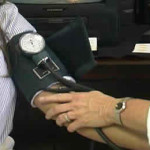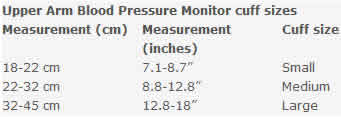How To Take and Get Accurate Blood Pressure Readings?
The procedure of checking the level of your blood pressure is simple and practical enough. Even you can do it at home without needing to go to a doctor’s office or hospital. Unlike in checking cholesterol and blood sugar level, blood test is not involved. Furthermore, there are also no special preparations before taking the test. However, there are also several issues you should concern to get the most accurate blood pressure readings.
A medical tool that is commonly used to check the blood pressure is called sphygmomanometer. The tool that you use to measure your blood pressure plays a key role to provide accurate readings.
Therefore, you need to purchase and use the right one! Sphygmomanometer is now widely available. There are now available a digital sphygmomanometer that can be used more practical than a manual /analog sphygmomanometer. And the good news, you don’t have to get a special prescription to get /purchase one.
If you use analog monitor, you need to find the best sound of your heartbeats in order to find the accurate readings of your blood pressure. But with automatic monitor – it is much more practical, as noted before.
It’s much better to choose automatic monitor with the cuff that is applied on your upper arm instead of on your wrist.
Wrist digital monitor also can work accurately as long as it is used exactly as instructed /directed.
But since your wrist is relatively more sensitive to your body position, many doctors often recommend using devices for upper arms rather than devices for wrists.
The arteries in the wrist that is not as deep under the skin as the arteries inside the upper arms can affect to the readings of the device. Furthermore, the wrist arteries are also relatively narrower than the upper arm arteries – another thing that has an effect.
Overall to get the accurate readings, you need to make your ‘wrist & arm’ (if you use wrist monitor) or ‘upper arm’ (if you use upper arm monitor) close to your heart level. And with an upper arm monitor, it can be realized easier.
If you have purchased a wrist monitor and if you in doubt whether or not it works accurately – bring it to a doctor’s appointment and ask your doctor to check its accuracy.
Who is recommended to use wrist monitor? If you cannot use the cuff on your upper arms because you have very large upper arms or if this option can be painful, the use of wrist monitor is commonly acceptable.
One of simple ways to ensure that you choose and buy the right one is by choosing one that labeled with clinically validated label by an authorized organization such as the British Hypertension Society or the American Society of Hypertension.
This label points the validation that the device is qualified to be used to measure blood pressure levels. Devices with this label usually have gone through a series of qualification tests to ensure it works accurately.
Ensure you choose one with the right size cuff that can meet the size of your upper arms. If you use oversize or undersize cuff, this can affect the result of the test.
In general, most blood pressure monitors comes with mild-sized cuff. Below is a helpful table in choosing the right cuff:
No matter how best and expensive the device that you buy, its accuracy can decrease over time. Therefore, it’s important to keep it calibrated – particularly true if you need to use it regularly in order to keep monitoring your blood pressure levels.
According to the UK blood pressure society, it’s recommended to re-calibrate the device for at least once in 2 years.
In general, you will find two numbers of pressure from a sphygmomanometer; systolic and diastolic pressure.
Systolic pressure is also familiar called as top number because it points to the pressure inside your arteries when your heart beats. Therefore, the number of systolic pressure (generally given in mm Hg) is usually higher than diastolic pressure (it points to the pressure against the blood vessel walls when your heart is not beating or ‘between beats’).
See also normal and abnormal levels of blood pressure on this section!
 Actually there are no special preparations you need to prepare before going to check your blood pressure. But for the most accurate readings, the following tips can help:
Actually there are no special preparations you need to prepare before going to check your blood pressure. But for the most accurate readings, the following tips can help:
- In order to get the real readings of the test, you need to make sure that you don’t experience temporary raised blood pressure. Drinking caffeine, too low ambient temperature (cold temperatures), smoking, stress, and even exercise can raise your systolic and diastolic pressure temporarily. So make sure to avoid these things before and during the test!
- To clearly see the fluctuation and improvement of your systolic & diastolic pressure, your doctor usually asks you to take the test at the same time each day.
- If you choose to use a manual sphygmomanometer, make sure you do the test in the quiet place so you can clearly listen the sound of your heartbeat.
- Try to get relaxed before and during the test, particularly for your arm (resting the forearm on the bed /table with the palm of hand facing up can help). Another idea, make sure that you don’t have too full bladder. Therefore, try to get a recently emptied bladder before the test. A full bladder may have an effect to the result of the reading. Removing any tight-sleeved clothing also can help.
As mentioned, checking your systolic and diastolic pressure is simple and practical. Here are common procedures on how to use a sphygmomanometer properly.
If your locate pulse improperly, this can significantly affect the way of your tool (either manual /digital sphygmomanometer) in measuring your systolic and diastolic pressure.




